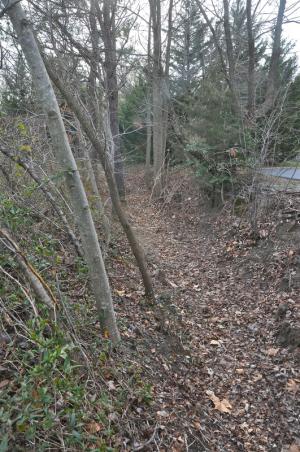Ditches cover majority of Sussex County
Sussex County is drained by a patchwork of thousands of miles of ditches, but not all ditches are alike.
There are 136 tax ditches that total more than 1,200 miles and drain more than 40 percent of the county. But there are many more miles of public ditches – at least five times as many – said Brooks Cahall, an environmental manager with the Delaware Department of Natural Resources and Environmental Control drainage section.
Even with all these ditches some areas – mostly in eastern Sussex – continue to flood during storms. Most tax ditches are located in northwestern and southern Sussex. When the county was inundated with rain and snow during the winter of 2009 and 2010, most areas with tax ditches did not flood, said Bill Vanderwende, president of the Sussex Conservation District board of supervisors. Many other sections of the county were not that fortunate.
During a presentation to Sussex County Council, Debbie Absher of the conservation district, said since 2007 more than 1,000 drainage complaints from Sussex residents have been recorded, which equates to one drainage concern for every 131 parcels in the county. Even during the recent dry period over the past year, more than 100 complaints have been received.
Two new tax districts – one near Long Neck and the other along Hudson Road to Red Mill Pond near Lewes – are planned to address flooding issues in the Cape Region that surfaced during the winter of 2009-2010.
Sussex has two-thirds of state's tax ditches
By state law, the Sussex Conservation District receives matching funds of $150,000 for the tax ditch program from the county and state. Absher said the last increase in funding was in 1993.
Absher pointed to the inequity in funding because each county receives the same funding although Sussex has two-thirds of the state's tax ditches. Broken down by the miles of tax ditches, Sussex receives $124 per mile, Kent receives $202 and New Castle receives more than $2,690 per mile.
The conservation district uses 75 percent of its funding for tax ditch maintenance, 10 percent for administrative costs, 8 percent for emergency repairs and 7 percent for spraying and weed cutting. However, as Absher pointed out, no funds are available for mowing along tax ditches.
Tax ditch districts collect taxes from members to help with maintenance, but the amount collected is not enough to cover costs, Absher said, so money from the matching fund the conservation district manages is used.
|
MORE INFO: PUBLIC DITCHES Constructed at no cost to landowners; funded with state 21st Century and/or community transportation funds; no funding for maintenance; 100 agreement required from all landowners for construction to take place. |
Not enough funds for all maintenance projects
In the past, the conservation district provided 50-percent matching funding to tax-ditch districts to assist with maintenance costs. Because of budget restraints, those funds are capped at $10,000.
Absher said the conservation district can't keep up with maintenance projects. The district received 51 applications for maintenance projects for the upcoming fiscal year with an estimated cost of more than $618,800. By instituting a $10,000 project cap, the requests were cut down to $250,000; even then, less than half the proposed projects received funding, Absher said.
With the deferred projects getting first priority in fiscal year 2013, less than $20,000 will be available for new maintenance projects.
Absher said another $400,000 – $200,000 from the state and $200,000 from the county – is needed annually to fully fund the tax-ditch program.
“We are running short, very short, on funding; we have to stop or hold off on work,” Absher said.
If tax ditches go three to five years with limited or no maintenance, farmland could be lost, Vanderwende said. “We will have a big problem on our hands,” he said.
The district needs $60,000 to hire a water resource planner to be the point of contact for drainage complaints, attend tax ditch annual meetings, keep elected officials up to date on drainage issues and ensure accountability of state and county matching funds.
Absher said a wet season will hit Sussex again, and flooding could be worse because maintenance projects to keep tax ditches viable are behind schedule.
General Assembly creates Drainage Law in 1951
Although ditches have been used by farmers for decades, tax ditches date back to the 1950s to provide better drainage for farm fields. The General Assembly enacted the 1951 Drainage Law to establish, finance and maintain drainage organizations. Tax ditches can be initiated only by landowners who petition Superior Court. Once initiated, the process to get a tax ditch in place could take three to five years, Cahall said.
Most of the county was farmland 60 years ago. But the landscape has changed, Absher said. Many tax ditches that once serviced farmland now run through communities and developments. “The urbanization of tax ditch watersheds has led to increased runoff and sedimentation and a strain on ditch systems that were originally designed for agriculture with increased maintenance costs,” Absher said.
An added benefit of tax ditches is the drainage they provide for towns and state roadways.
Tax ditches only part of conservation district's mission
Tax ditches are only one area of concern for the Sussex Conservation District. Headquartered in Georgetown, the conservation district provides programs and services to improve water quality, prevent erosion, handle stormwater and manage animal wastes. District staff evaluate stormwater plans for developments and provide inspections.



















































